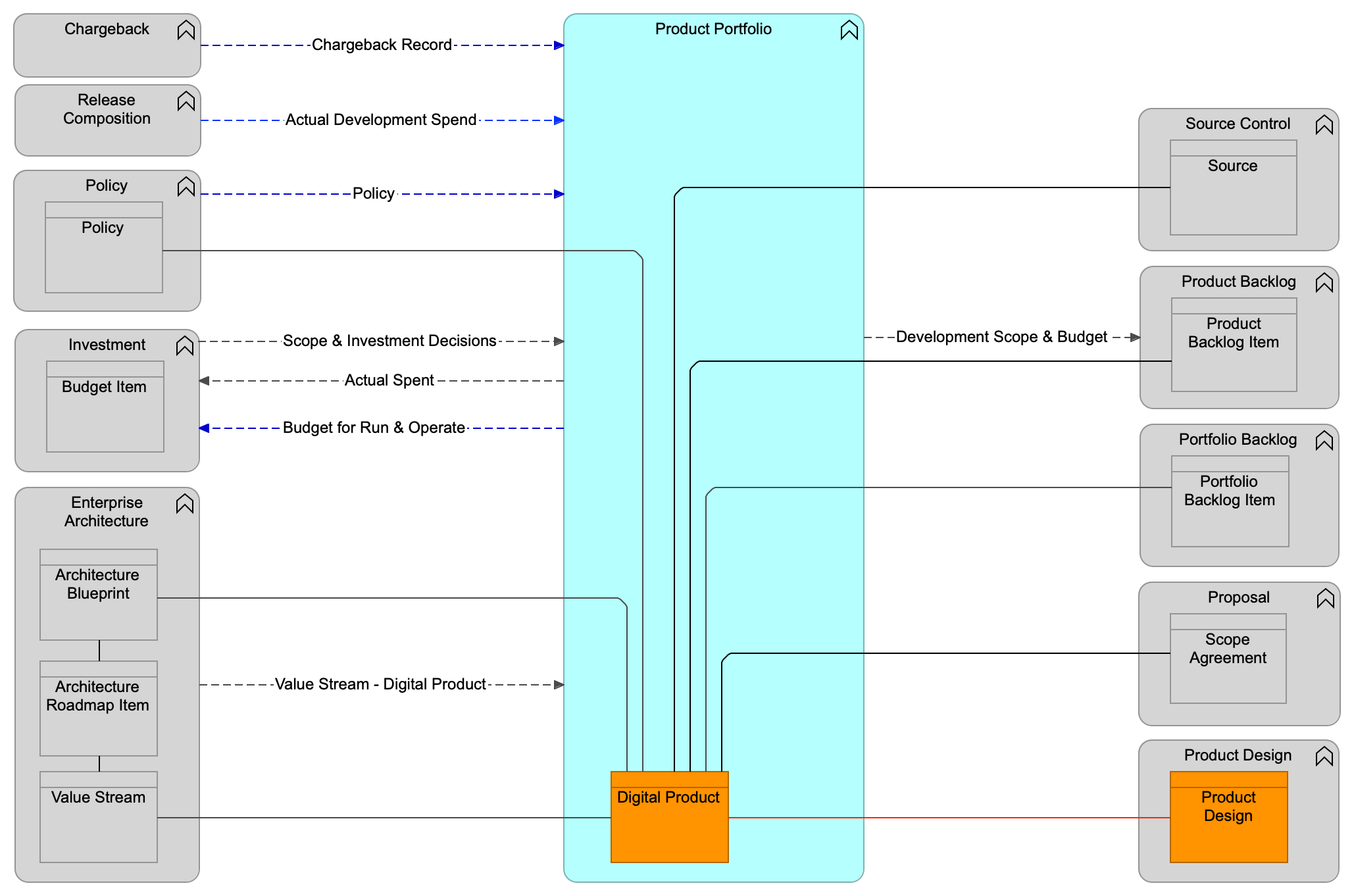Product Portfolio Functional Component

Purpose
The Product Portfolio functional component structures and organizes all of the different types of Digital Products managed by the organization. Digital Products are grouped into portfolios that allow for the grouping of like Digital Products based on ownership, value stream alignment, product lines, strategic investment groups, and prioritization.
Each Digital Product is managed based on common criteria and attributes that provide the data to properly manage them throughout their lifecycle. Managing dependencies and dependents of the Digital Products is a critical aspect of the Digital Product, as well as making portfolio decisions.
While the Product Portfolios may be arranged in any way an organization requires, there are three basic top portfolio tiers to facilitate strategic planning:
-
Market-facing – Digital Product offerings used by customers, organized by product lines, versions, or models accessed by a human or machine interface
-
Internal-facing – Digital Product offerings used by employees, manufacturing, and other automaton tasks
-
Foundational – common and foundational Digital Products often used to build or facilitate other Digital Products such as infrastructure, networking, platform, and other commodity building blocks
These three portfolios allow for relevant strategic discussion and funding decisions to be made more readily, without needing to identify every specific Digital Product affected.
The Product Portfolio functional component supports the value streams:
Functional Criteria
The Product Portfolio functional component:
-
Must include all Digital Products managed by the organization
-
May support a taxonomy of portfolios with sub-portfolios, and ultimately contained Digital Products
-
Must provide, via specific Product Designs and Product Releases, Service Offers describing the contract, rules, warranty, and other consumer-based attributes used to establish a contract
-
Must track consumer contracts, which may be simple promises, acceptance of usage terms, Subscriptions, or binding legal agreements
-
Shall support strategic funding and de-funding activities at a portfolio level, and infer decisions on all contained Digital Products
-
Shall review input from organizational strategy, consumers, and market sources to propose portfolio changes that decide whether to keep, retire, increase, or decrease investment
-
Shall track all backlog items used for prioritizing investment and potential changes
-
Shall assess effectiveness, efficiency, and satisfaction of the Service Offers being consumed
-
Should aggregate all metrics from dedicated resources, dependencies, and consumption to include, for example, total costs, performance, consumption, capacity, resources, risks, benefits, quality, fitness-for-purpose
-
Shall manage an inventory of underlying shared resources, systems, Service Offers, and instances
-
Shall track all consumers such as users, instances, and machine/API dependencies
-
Shall compare Digital Products with similar ones to identify rationalization opportunities
-
Shall create, review, and update Digital Products
-
Shall create and maintain service blueprints and end points
-
May share roadmaps with market, consumers, peers, partners, and dependent Product Managers
-
May have roadmaps that include major and minor versions/models
-
Should ensure compliance with all applicable Policies if a related Policy exists
-
Shall aggregate charges from the Chargeback functional component if a Chargeback functional component exists
-
May send the operation charge acceptance to the Chargeback functional component if a Chargeback functional component exists